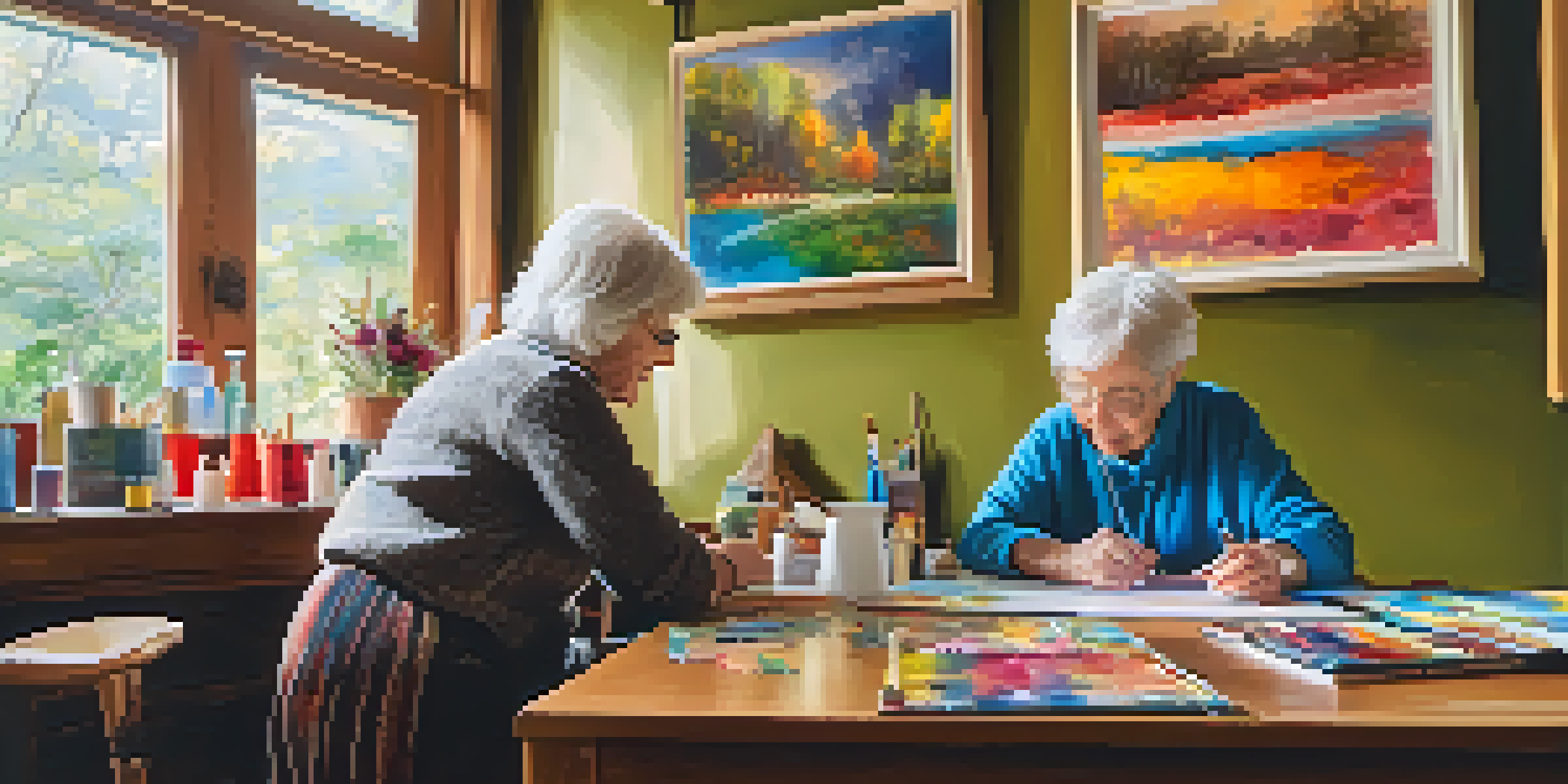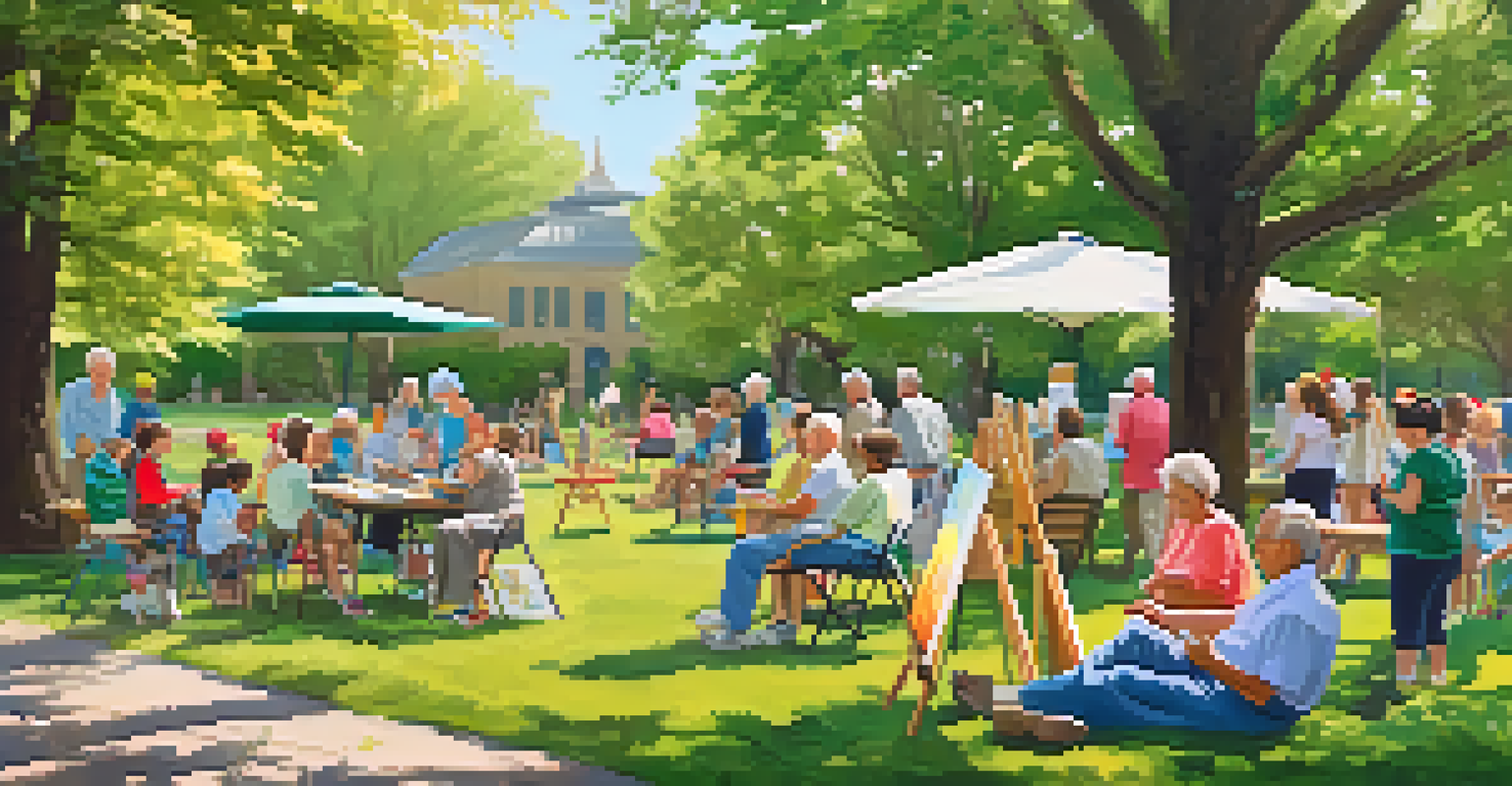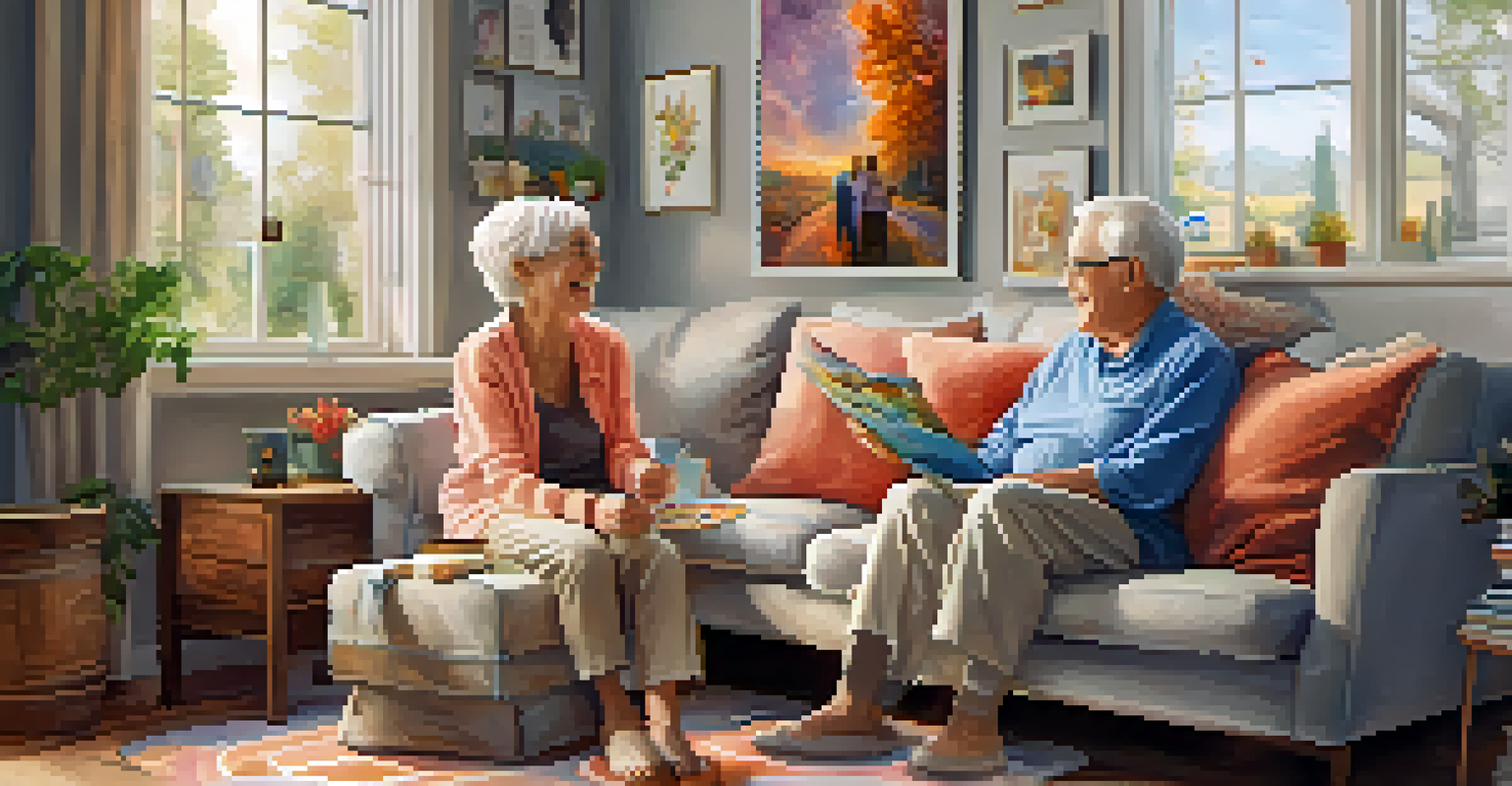Intergenerational Learning: Passing Down Painting Skills

Understanding Intergenerational Learning and Its Benefits
Intergenerational learning is the exchange of knowledge between different age groups, often seen in familial or community settings. This approach can create a rich tapestry of experiences, as younger and older generations learn from each other. For instance, while grandparents may pass down traditional skills, children can introduce technology, creating a dynamic learning environment.
Intergenerational learning is not just about sharing knowledge; it's about creating connections that enrich our lives.
One of the core benefits is the fostering of relationships. Through shared activities like painting, family members can bond over mutual interests, bridging gaps that might otherwise exist. This connection can also lead to greater appreciation of each other's perspectives and experiences.
Moreover, intergenerational learning enhances cognitive and emotional well-being. Engaging in creative activities like painting can reduce stress and spark joy, making it a win-win for both parties. As they create art together, both young and old can find a sense of purpose and fulfillment.
The Role of Painting in Skill Transfer
Painting serves as a fantastic medium for intergenerational learning, offering a hands-on way to share skills and creativity. When a grandparent teaches a grandchild how to mix colors or hold a brush, they are not just passing down techniques but also stories and traditions. Each stroke of the brush can become a lesson in patience, creativity, and expression.

Additionally, painting encourages experimentation, allowing younger learners to explore their own styles while benefiting from the wisdom of their elders. For example, a child might take inspiration from a grandparent's realistic approach and blend it with their abstract flair, creating something uniquely their own.
Intergenerational Learning Benefits
Intergenerational learning fosters relationships, enhances well-being, and creates a dynamic exchange of knowledge between young and old.
This collaborative process not only boosts artistic skills but also nurtures confidence. When children receive guidance and encouragement from their elders, they often feel more empowered to express themselves, leading to a deeper appreciation for the art form.
Techniques to Facilitate Intergenerational Painting Sessions
To make intergenerational painting sessions enjoyable and effective, start with simple techniques that everyone can grasp. Begin by selecting a familiar subject, such as a family pet or a favorite landscape, which can spark shared memories and discussions. This common ground encourages collaboration and creativity among participants.
Art enables us to find ourselves and lose ourselves at the same time.
Another effective technique is to demonstrate a skill before allowing others to try it. For instance, a grandparent can show how to create a gradient effect, then invite the child to replicate it. This step-by-step approach helps build confidence while ensuring that everyone feels supported during the learning process.
Lastly, remember to keep the atmosphere light and fun. Art is about exploration, not perfection. Allowing for mistakes and encouraging laughter can transform painting sessions into cherished memories rather than a pressure-filled experience.
Creating a Comfortable Learning Environment
A comfortable learning environment can significantly enhance the intergenerational experience. Set up a cozy space with plenty of natural light and all the necessary painting supplies, such as brushes, paints, and canvases. This welcoming atmosphere sets the stage for creativity and open communication.
Incorporating personal touches can also make the space feel more inviting. Displaying previous artworks or family photos can inspire conversation and reflection. These elements not only foster a sense of belonging but also create a narrative around the shared experience of painting.
Painting as a Learning Tool
Painting serves as an effective medium for skill transfer, allowing generations to share techniques, stories, and artistic expression.
Encouraging breaks and discussions during painting can also help maintain comfort. These pauses allow participants to share thoughts, stories, and even frustrations, reinforcing the bonds between generations and enriching the learning experience.
Incorporating Technology in Painting Lessons
In today's digital age, incorporating technology into painting lessons can enhance the learning experience. For instance, using tablets with painting apps allows younger generations to demonstrate their skills while teaching older family members about new tools. This exchange can lead to exciting discussions about different styles and techniques.
Additionally, online tutorials can serve as a valuable resource for both generations. They can watch and learn together, using these videos to practice new skills or explore different painting styles from the comfort of their home. This collaborative approach can make the learning process more engaging and interactive.
However, it’s essential to balance traditional painting techniques with technology. While digital tools can be beneficial, the tactile experience of traditional painting should not be overlooked. Striking this balance can offer a well-rounded education that respects the past while embracing the future.
Celebrating Achievements and Progress
Celebrating achievements, no matter how small, is crucial in reinforcing the value of intergenerational painting sessions. Host an informal art show at home, showcasing the artworks created during these sessions. This event can be a delightful way to highlight individual progress while fostering a sense of pride and accomplishment.
Encouraging family members to share their thoughts on each other's work can also enhance the experience. Constructive feedback, when given in a supportive manner, can motivate participants to continue improving their skills. This practice nurtures a culture of appreciation, making the learning process more enjoyable.
Creating a Supportive Environment
A comfortable and inviting space enhances the intergenerational learning experience, encouraging creativity and open communication.
Moreover, documenting the journey through photographs or a shared scrapbook can serve as a lasting reminder of these cherished moments. Reflecting on past sessions can inspire future creativity and deepen the connection between generations, ensuring that the art of painting continues to flourish.
The Lasting Impact of Intergenerational Painting
The impact of intergenerational painting extends far beyond the canvas. It fosters a deep understanding of history, culture, and personal stories, allowing younger generations to appreciate their roots. Through the act of creating art together, families can strengthen their bonds and preserve their legacies.
Moreover, these sessions can instill a lifelong love for art and creativity in both young and old. As skills are shared and nurtured, participants often find joy in expressing themselves through painting, leading to a more vibrant and creative family culture.

Ultimately, intergenerational learning through painting not only enhances artistic skills but also enriches lives, creating a tapestry of shared experiences that can be cherished for years to come. This unique exchange serves as a beautiful reminder that art, like life, is best enjoyed together.